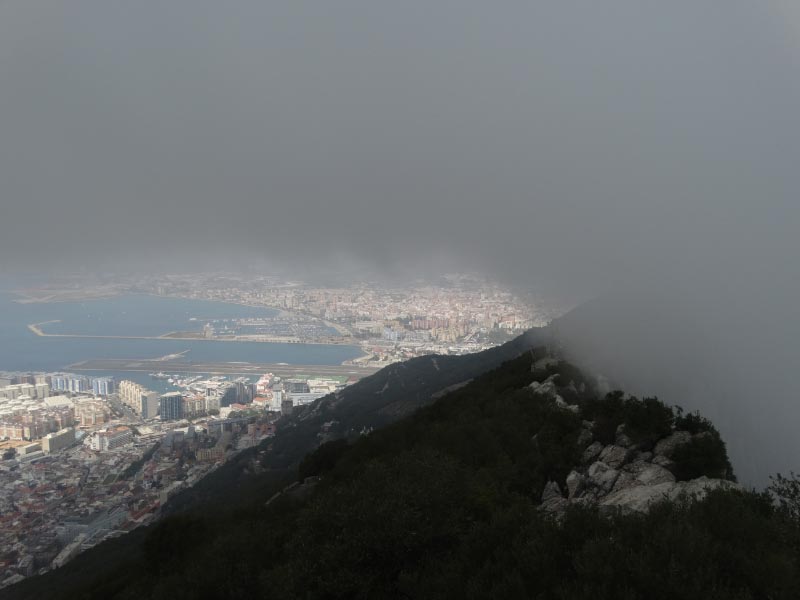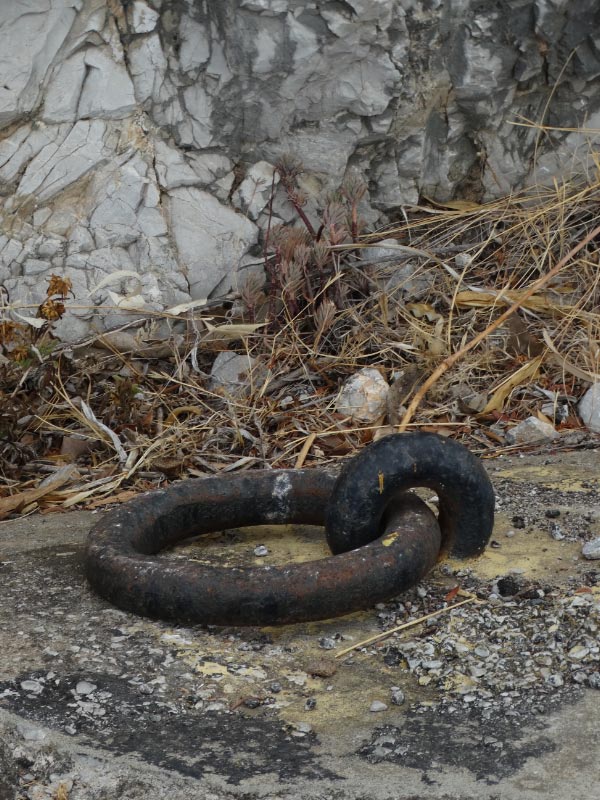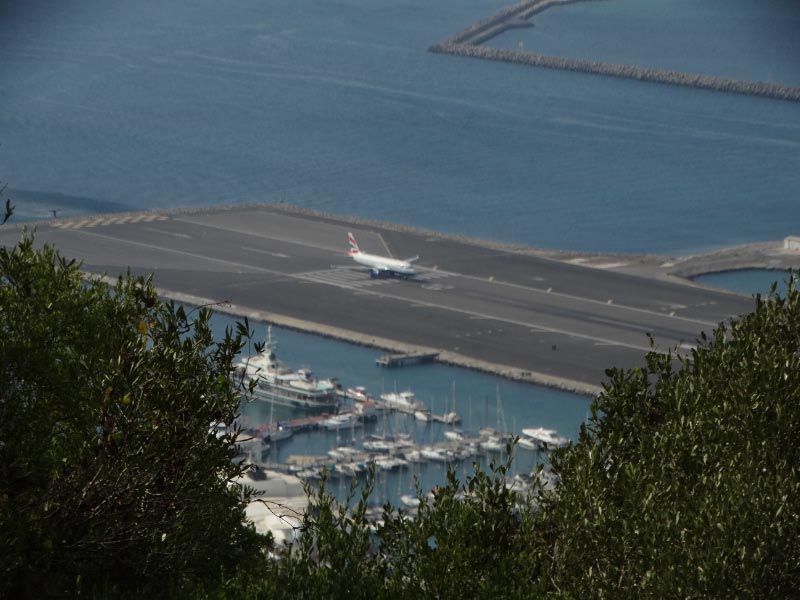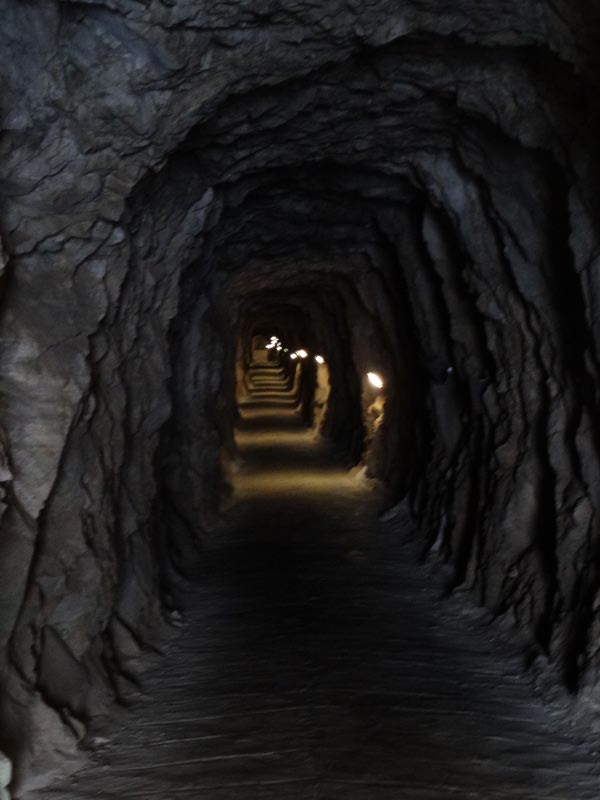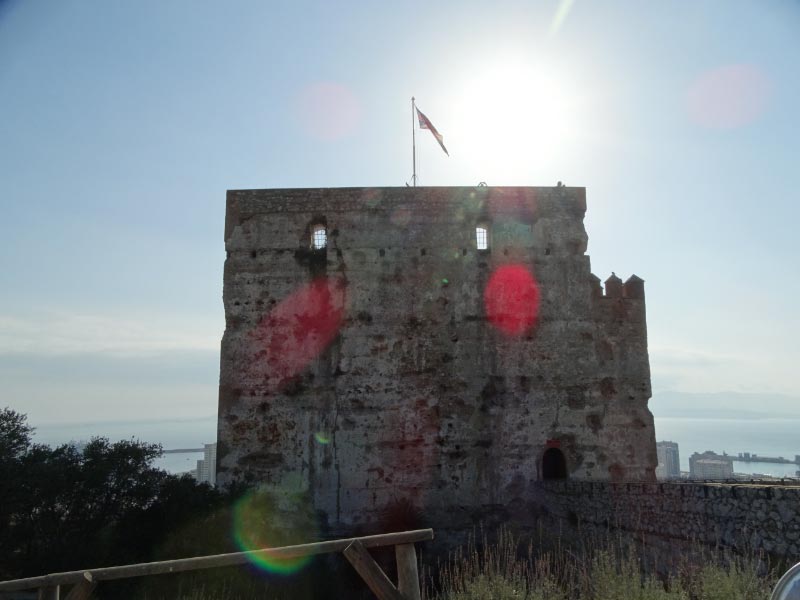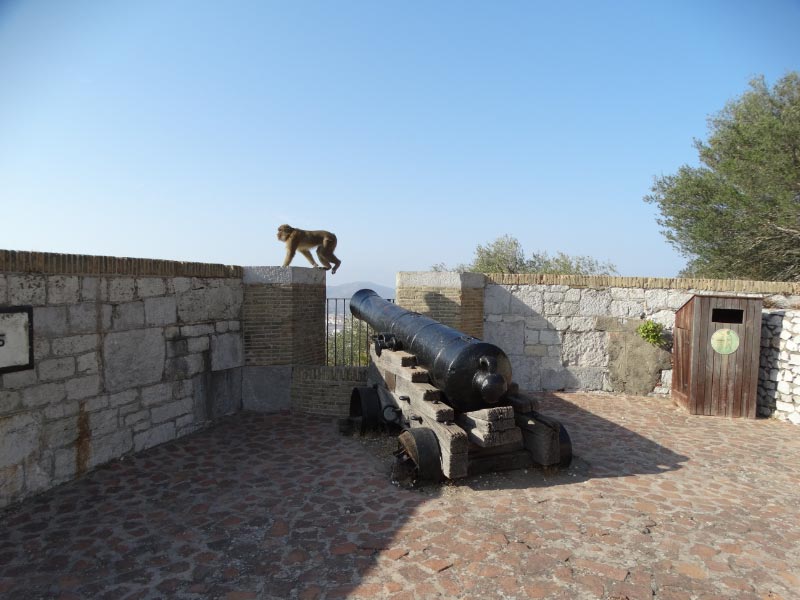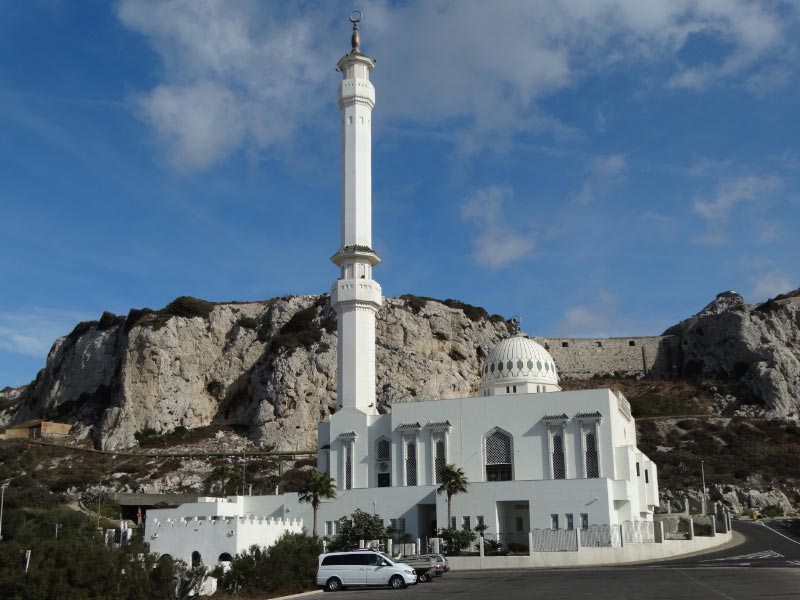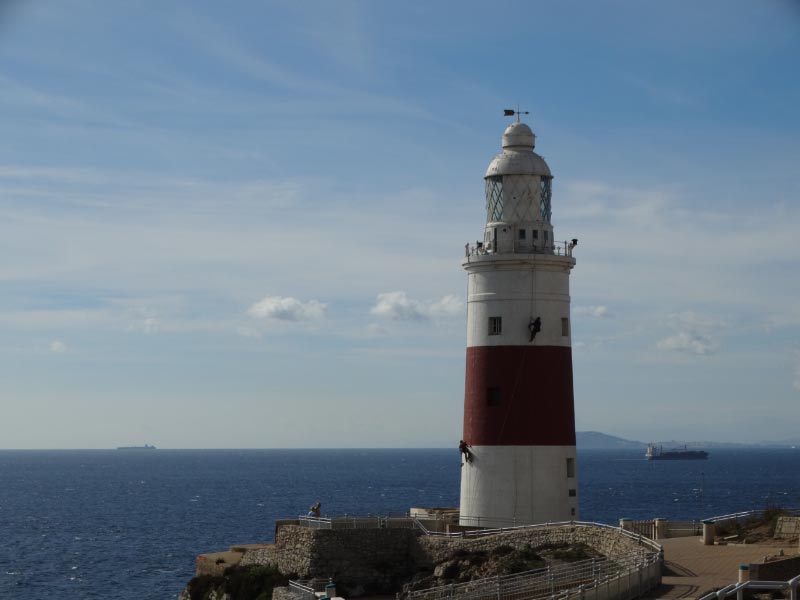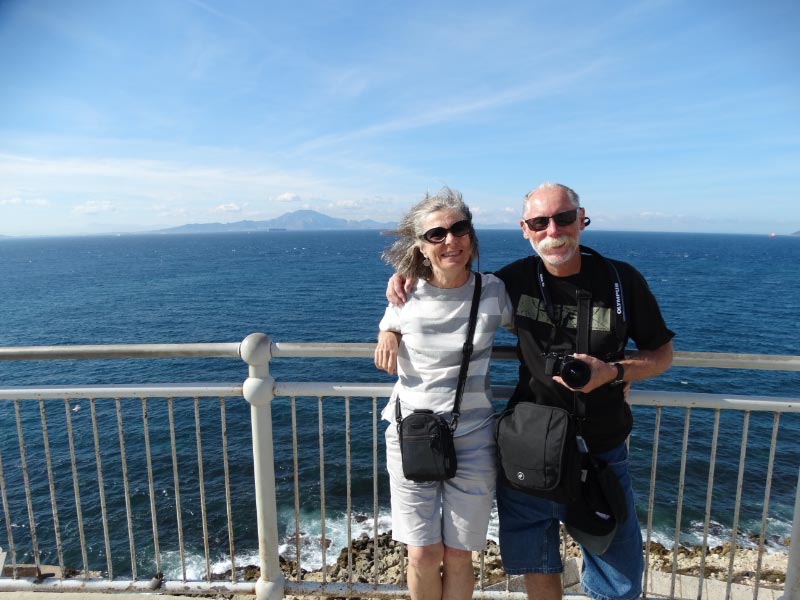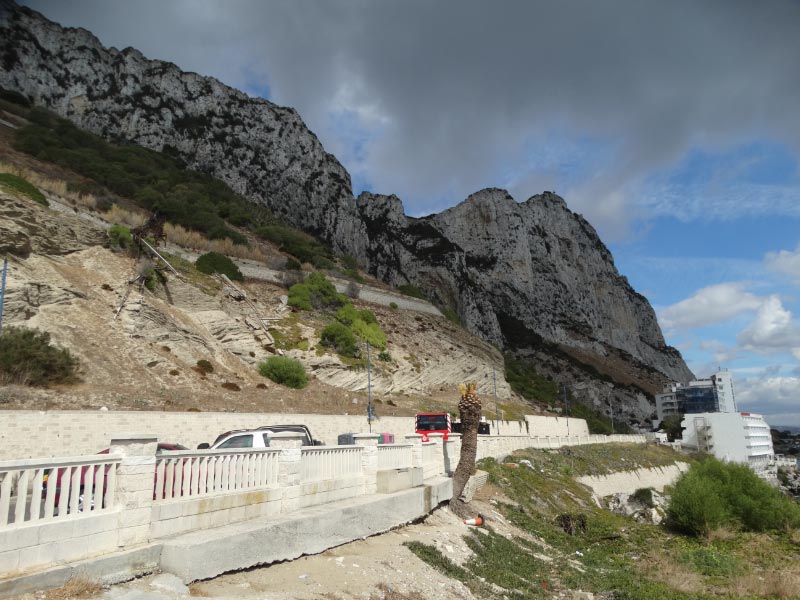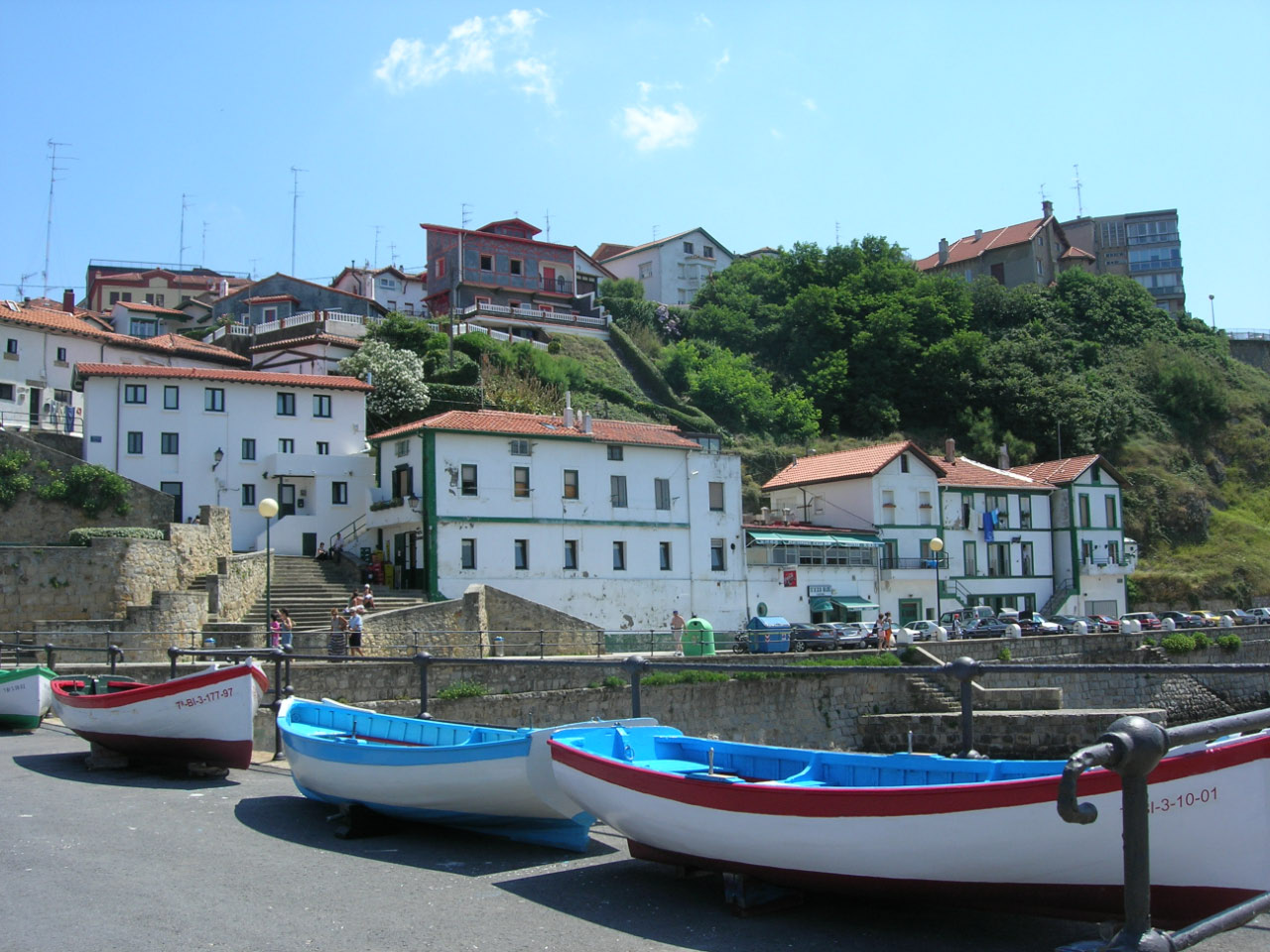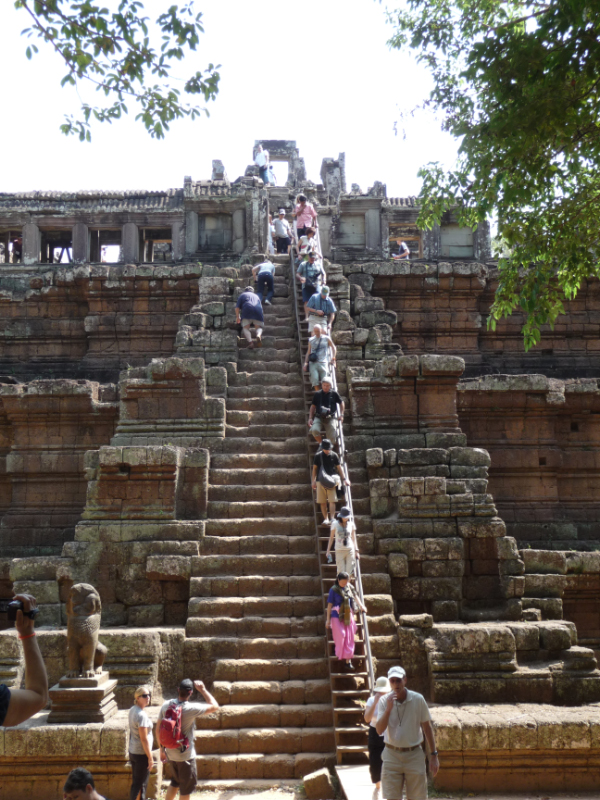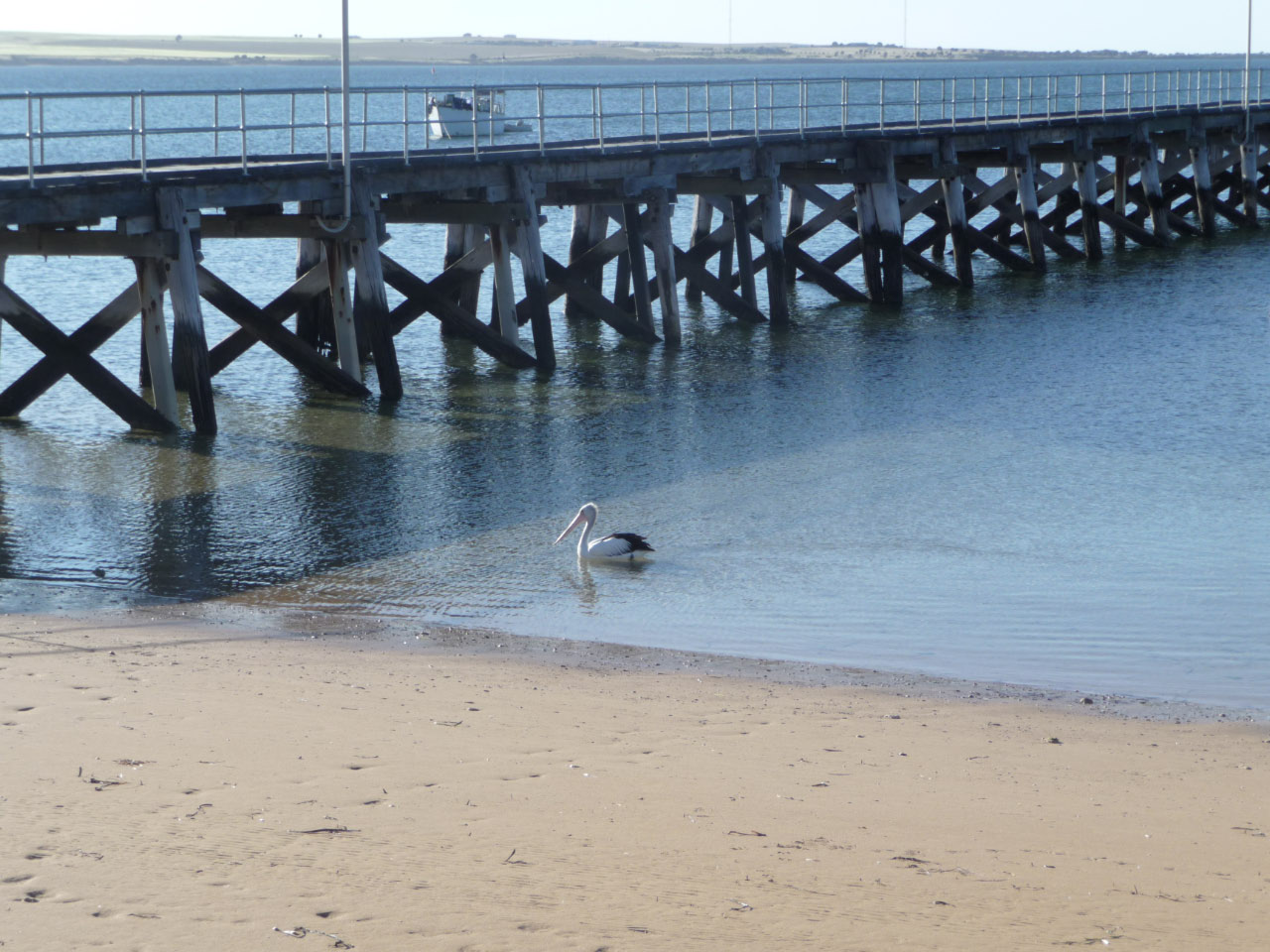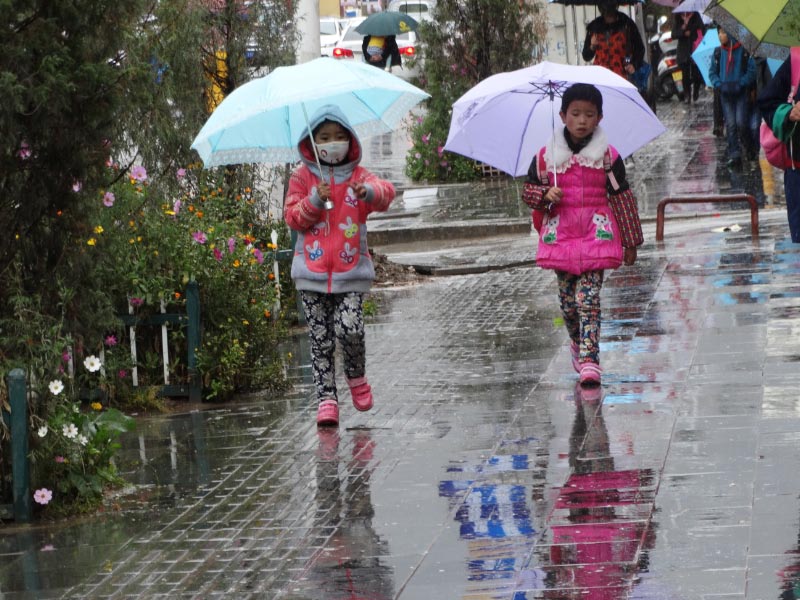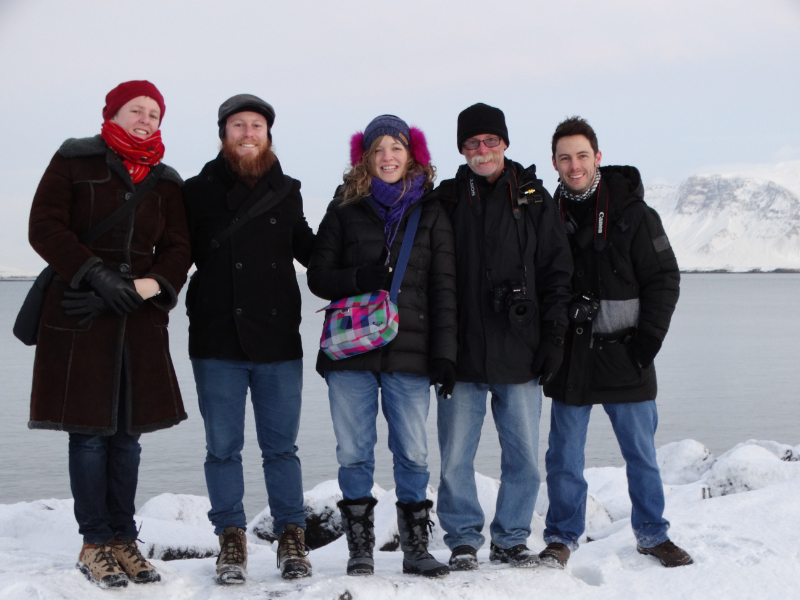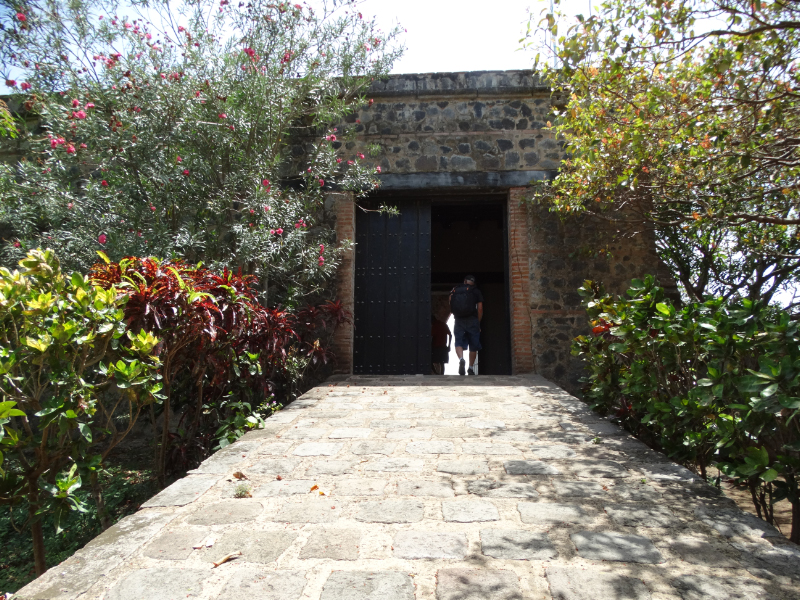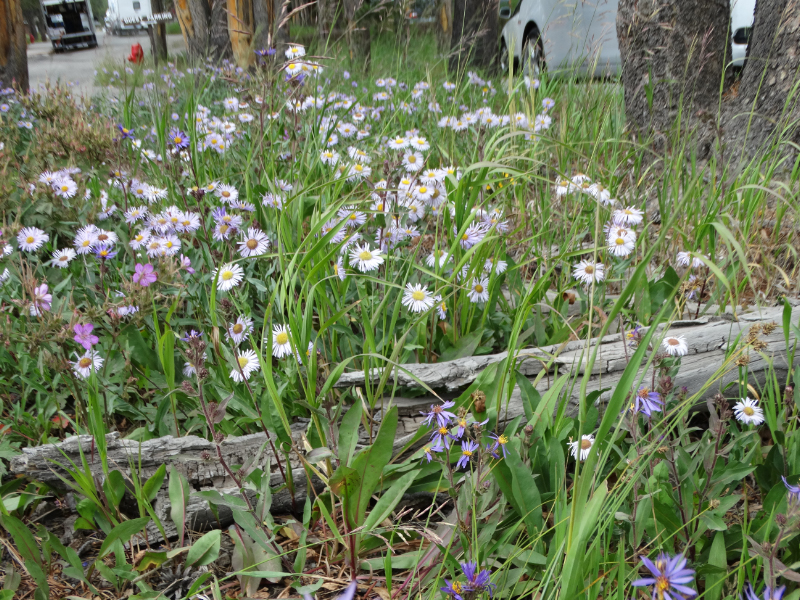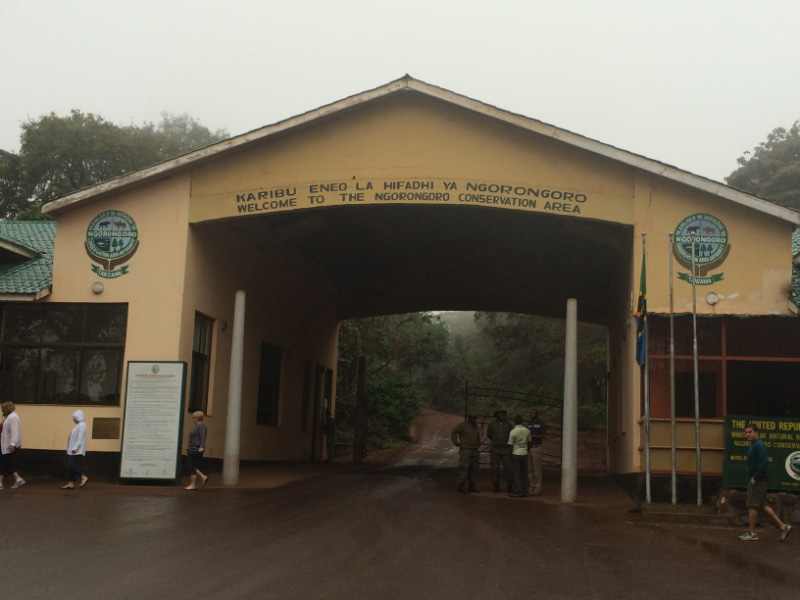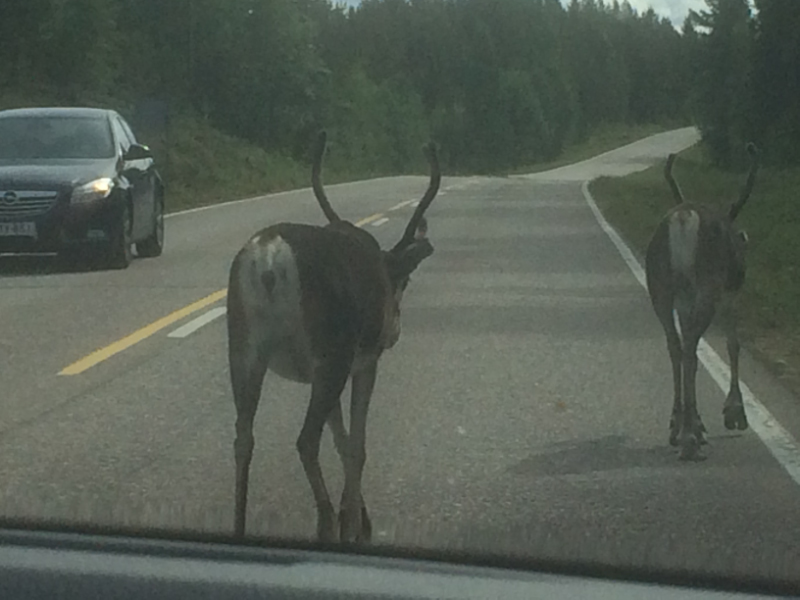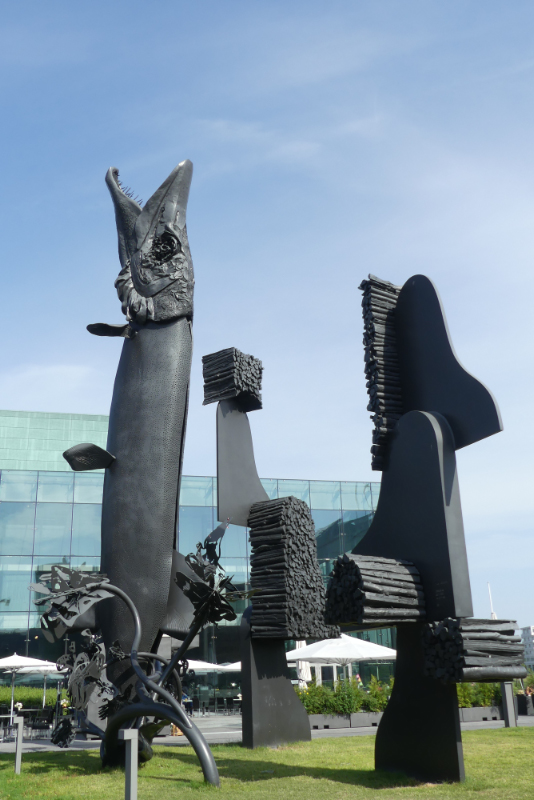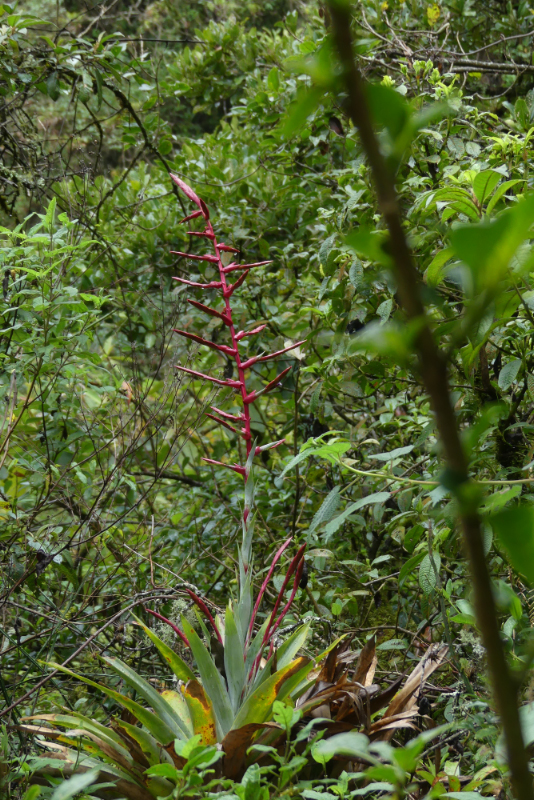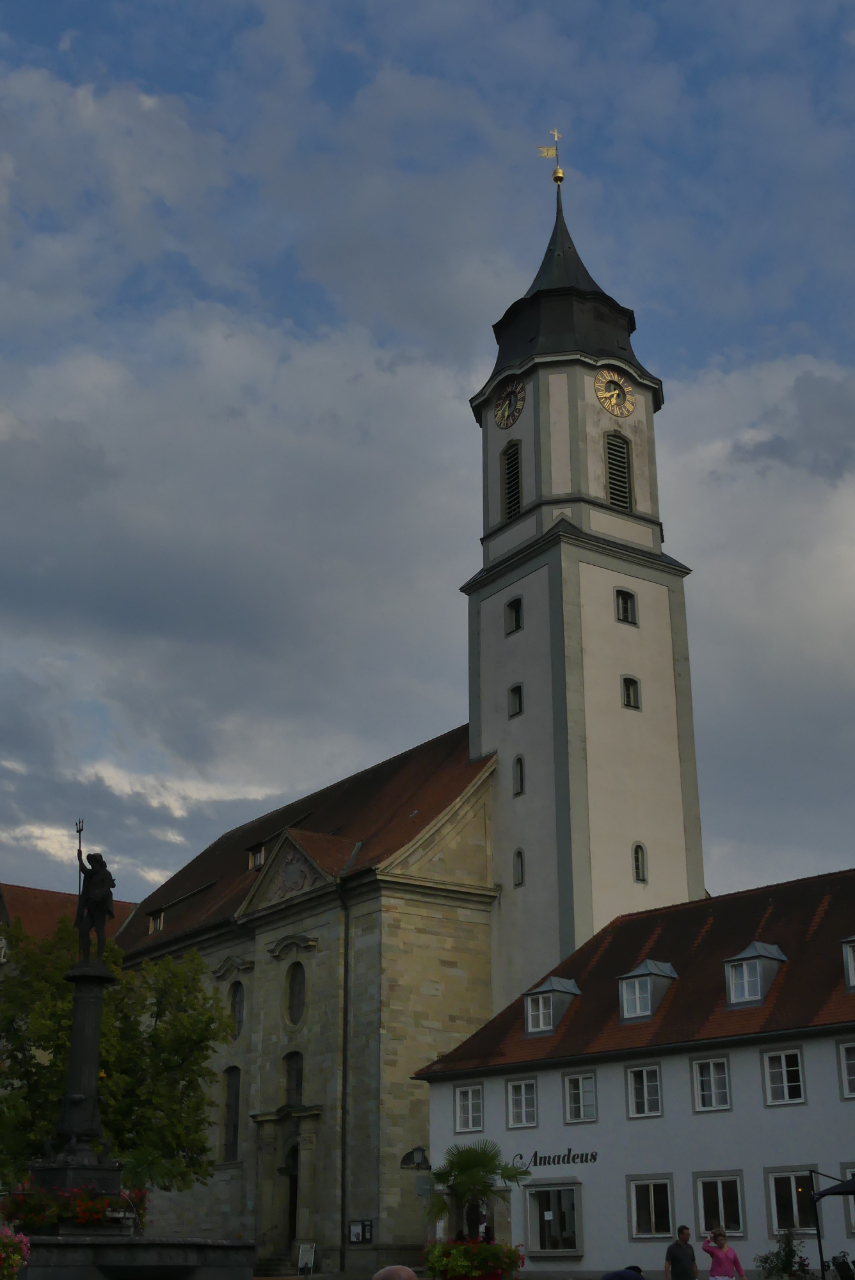Monday 12 to Tuesday 13 September
It was a ‘wow’ moment when the rock came into sight – it is big and on our visit a heavy grey cloud hung over the top of it.
I had been told not to spend too much time in Gibraltar – it can all be seen in an hour and a half.
That was nearly true, just that we had to wait an hour and a half in the queue for the funicular that takes visitors to the ‘Top of the Rock’.
The top of the rock is home to Macaques, also known as the Barbary Apes, and there are signs all over saying do not feed them as they are well fed on a managed diet and there is an increased risk that they can harm you. We’ve seen enough primates in our travels to understand that if you leave them alone, they will likely leave you alone.
So the first thing tourists do when they get off the funicular is chase them, try to pet them and feed them. True to the signage, we saw the macaques steal bags, jump on heads and shoulders and generally frighten the tourists. Enough said.
We love Spain, we love the culture, we love the pride the Spanish have in keeping their cities clean, we love the abundance of fresh and tasty food. So Gibraltar was disappointing.
An app we were encouraged to download in the funicular queue didn’t tell us anything useful and simply didn’t work once we left the café. That app went.
A brochure showing paths to follow was provided with the tickets. There was little or no signage on the rock to support the brochure and the paths were in such poor condition that we had to abandon our planned walk.
But we enjoyed learning about Gibraltar’s history and understanding why it is such a tactical point at the entry to the Mediterranean.
Our first visit was to St Michael’s Cave. It now houses a concert hall with a gaudy display of coloured flashing lights, as we examined the stalactites and stalagmites. Most interesting was a cross section of a stalagmite that had collapsed, perhaps thousands of year ago. The cross section, like a tree, reveals its life span. This revealed centuries of climate, with a couple of thinner lines believed to represent glacial periods.
We walked north, past the Charles V wall, and on to the Great Siege tunnels and the story of Britain defending Gibraltar against the Spanish. The Great Siege, the 14th siege of Gibraltar, started in 1779 and lasted 3 years and 7 months and 12 days. These tunnels were commenced in 1782 and hurriedly built to allow cannons to get a decent projectile against the Spanish. It took thirteen men 5 weeks to drive a tunnel 82 feet long into the rock.
The tunnels have since been expanded, particularly during the 1st and 2nd World Wars. There are now 48 kilometers of tunnels within the rock. It must be a little like honeycomb.
And what has come out of the rock has been used to build the runway. The only road into Gibraltar runs right across the runway, so when a plane is about to land or take off, the road is closed to all traffic – pedestrians, cyclists, cars and trucks.
As we descended the rock, we stopped by an old Moorish Castle, another legacy to the many invasions suffered in this land.
We chose to dine ‘British’ at one of the many pubs. It is fair to say the food was awful, the wine ordinary and the beer predictable. And in true British style, everything was shut by 9pm – just as our Spaniard friends are getting ready to eat.
In the morning the air had cleared, so we drove to Hardings Battery at the tip of the rock. An Indian gentleman insisted on taking our photos, one each with Africa, Spain and Great Britain in the background.
Perhaps Gibraltar was disappointing, but it was certainly worth the visit.
e_header.jpg)





